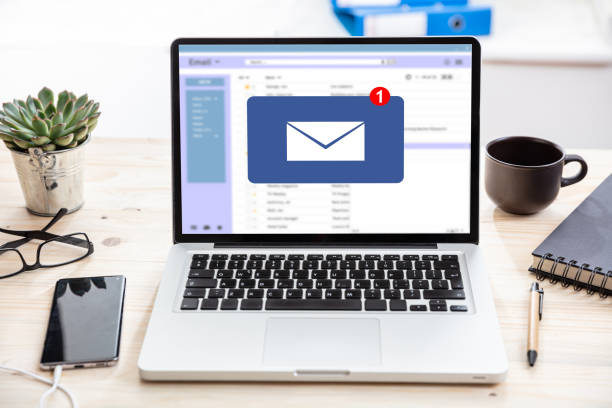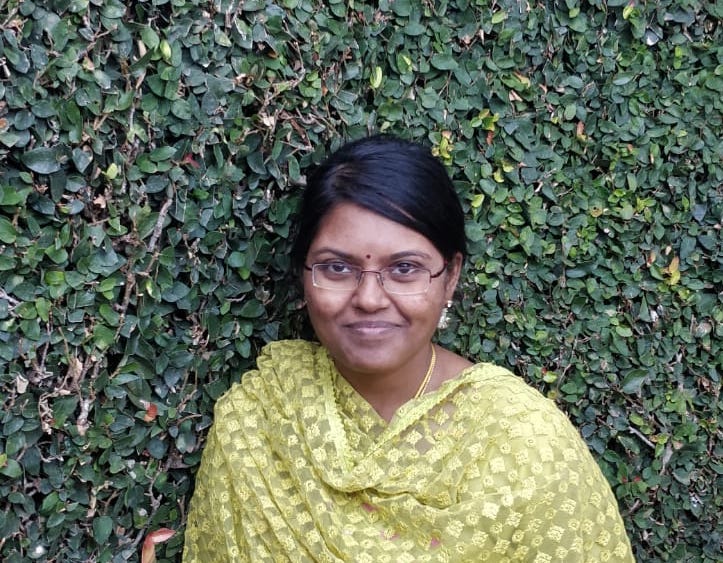October 16, 2025
 by Tessa Smalley / October 16, 2025
by Tessa Smalley / October 16, 2025

You did everything right: crafted a great subject line, designed a compelling email, and hit “send.” But instead of landing in your customer’s inbox, your message vanished; buried in the spam folder, never to be seen.
Whether you're a marketer, founder, or sales rep, email deliverability can make or break your results. And with inbox providers like Gmail and Outlook constantly updating their spam detection algorithms, the rules are stricter than ever.
The good news? You can stay out of the spam folder if you fix the issues that trigger spam filters.
Prevent emails from going to spam by verifying your domain, authenticating with SPF, DKIM, and DMARC, avoiding trigger words, and maintaining a clean list. Maintain a consistent schedule, personalize emails, and test them with spam checkers.
This article will walk you through exactly how spam filters work, why your emails are missing the mark, and how you can use your email software to improve deliverability.
You’re sending legitimate emails to people who signed up, so why are your messages landing in spam folders instead of inboxes?
Spam filters today aren’t just scanning for shady subject lines or trigger words. They’re powered by artificial intelligence (AI) and machine learning models trained on billions of email signals. These systems evaluate your sender behavior, technical credibility, and user engagement to determine whether your email deserves inbox placement or gets filtered out.
Let’s break down the biggest culprits:
Sender reputation is one of the strongest signals email service providers (ESPs) use. It's built over time based on how recipients and the internet respond to your emails.
Red flags that tank your reputation include:
If your domain/IP reputation is poor, even transactional emails may skip the inbox.
Even if you’re sending from a business domain, a lack of email authentication can make you look like a spammer. These protocols help ESPs verify you're really you:
Without all three configured properly, your emails may fail authentication checks and get dumped into spam automatically. Worse, unauthenticated domains are easier to spoof, making you vulnerable to phishing and domain blacklisting.
Spam filters also learn from human behavior. If most recipients delete your emails without opening them, or worse, mark them as spam, inbox providers take notice.
Negative signals include:
Conversely, high engagement boosts your inbox placement. If users open, click, reply, forward, or move your emails to other folders, those are “positive signals” that teach the filter that your emails are wanted.
Billions of unwanted messages are sent every day. Spam filters attack these emails to protect recipients from malicious cyber attacks. In response to the rise in email fraud and phishing attacks, advances in AI and machine learning (ML) have made modern spam filters more sophisticated and accurate.
Spam filters come in different forms, each with unique criteria to scan emails and block unsolicited messages.
Header filters evaluate the information in the email header for suspicious details or activity. This involves checking the sender and recipient details, subject line, and email relay chain. An email relay chain is a trail left by the servers involved in delivering an email. Spammers typically fake this trail because they don't want to be tracked.
Content filters scan incoming emails for a predefined list of words (free, easy money, 100% guaranteed, and more) that spammers use. Anyone can customize these filters and add their own spam trigger words.
Heuristic filters are also content-based. They use algorithms to identify spam by rating specific words and phrases in your emails. Suspicious words and phrases in a message are given a higher score than other terms. Your email becomes spam if the total score exceeds a predefined threshold.
These are among the most advanced spam filtering systems. They assess the overall context of emails. These rule-based filters use mathematical formulas to analyze a new message’s content and compare it to previous emails from the same sender. Bayesian filters learn over time and become significantly more accurate at distinguishing valid from spam emails.
Language filters are designed to block messages that appear in a language different from the recipient’s primary inbox setting. This helps prevent foreign-language spam or phishing attempts. However, it can also lead to false positives, for example, when an international customer or colleague sends a legitimate message in a different language.
Blacklist filters are pretty straightforward. They compare the sender's domain name or IP address to a blacklist of bad-reputation email domains, domains that are known to send suspicious emails or have previously been flagged by recipients and move it with similar emails to the spam folder. Most email service providers allow you to blacklist specific email addresses.
A few simple strategies can keep your business emails out of spam filters and win you half the battle. You can win the other half by providing value and ensuring your recipients never reach for the "report spam" button.
Check out this video for useful tips to implement for your next campaign to avoid nesting in that spam folder.
Source: Mailmeteor
When you get a business email from someone you don't know or don't immediately recognize, you probably move it to trash or report it as spam. Your recipients will do this if your email address is suspicious or contains gibberish.
Using a professional email address is the first step in building customer trust. In addition to branding, a business mailbox gives your email legitimacy, letting customers know they can trust the email’s source. Ensure you implement email authentication protocols to prevent hackers from impersonating you and affecting your email deliverability.
If you have any follow-up emails to send, ensure to use the same address. This way, they know it's a valid message from a company, even if they don't immediately recognize the sender, so your message is less likely to be marked as spam.
Tip: Ditch the free Gmail address. Use a custom domain (e.g., yourname@yourcompany.com) to establish trust with inbox filters and recipients.
The subject line is one of the most critical elements of your email. It’s the first thing your recipient sees, and it plays a significant role in whether your email gets opened.
A clear and relevant subject line sets the right expectations and helps build trust with your audience. Avoid misleading or overly sensational subject lines, as they can lead to higher spam complaints and damage your sender's reputation. Instead, focus on creating subject lines that are concise, to the point, and reflective of the email’s content.
This approach not only improves open rates but also ensures that your emails are seen as trustworthy and valuable.
Marketing emails should clearly indicate a way for recipients to unsubscribe. While it's not a legal requirement everywhere, ESPs consider an unsubscribe option an important feature of legitimate emails.
Allow your recipients to easily unsubscribe by including an unsubscribe link in the email header or footer. Additionally, delete emails of recipients who unsubscribe from your mailing list. You can even automate this process using a professional email service.
A clean, up-to-date mailing list keeps engagement high and unsubscribe rates low. Your email campaigns will receive fewer soft bounces and spam complaints from uninterested recipients, so the domain's reputation won't suffer. You'll also send fewer emails overall, and many ESPs charge by number, so having a clean mailing list will save you money.
To clean up your mailing list, start by eliminating duplicates, typos, invalid emails (hard bounces), and spam catchers – email addresses with the word “spam” in them. Ensure each subscriber on the list has opted in to receive your emails. As you maintain your existing list, using a trustworthy email extractor tool can help you continuously add new potential customers interested in your content. Then segment by demographics, geography, interests, and engagement rates to show how your current audience matches your ideal.
Scheduling a mailing list cleanup is helpful, especially when you have quite a few to work with. Always focus on quality before quantity. Your goal is to ensure everyone on the list wants your email.
You can also consider double opt-ins and opt-outs, so recipients can choose only to receive certain content and implement a sunset policy to remove unengaged subscribers from your mailing list.
Email segmentation is about understanding the people you're writing to, knowing where they are in the customer lifecycle, and sharing content they find useful. Proper segmentation reduces deliverability issues and increases engagement rates.
If you send weekly or monthly newsletters, start segmenting your audience based on demographics, location, interests, and acquisition source.
If you're a SaaS company, you may want to segment recipients based on the sales funnel stages and tailor emails to your prospects’ needs. Similarly, e-commerce businesses can segment mailing lists based on indicators like cart abandonment, average order value, and purchase history, and email customers the right content to buy (or buy again) without intruding and spamming.
Some email marketing service providers allow you to segment audiences based on engagement rates. So, recipients who haven't engaged with your messages as much in the past get fewer emails and are less likely to mark you as spam.
One of the most effective strategies for protecting your business email from spam is to confirm that recipients are genuinely interested in your email. A "double opt-in" approach helps you record subscribers' consent and signal to their ESPs that your emails shouldn’t be marked as spam.
When someone submits their information on your website, send them a welcome email that requires an action, usually a checkbox or a link to your policies. Subscribers will only be added to your mailing list if they confirm this.
This approach accustoms recipients to open your emails and shows their spam filters that your emails are not unwanted or unsolicited. Better still, you can ask recipients to save your contact information and skip spam filters forever.
You already know how "trigger" words and phrases in email content dramatically increase spamming rates. They make you sound like a spammer and attract the attention of spam filters. A few trigger words alone might not be enough to flag your message immediately.
However, too many trigger words in the subject line or body text, coupled with signals like an unauthenticated mailbox, bad domain reputation, or too many attachments, will eventually make your email spam.
Tip: Especially avoid adding .zip or .exe files. Too many attachments or large files often trigger filtering. Instead, link to cloud-hosted files.
Personalization goes beyond just addressing your recipients by name; it involves tailoring the content of your emails to the preferences and behaviors of your subscribers.
Personalized emails are more engaging and relevant, which increases the likelihood of them being opened and read. This can include personalized product recommendations, content based on past interactions, or offers tailored to specific segments of your audience. Consider customizing your email signatures, adding signatures in Outlook, Gmail, etc, and creating a professional and branded closing for your messages, which contributes to a consistent and polished communication style
By making your emails more relevant to each recipient, you not only enhance their experience but also reduce the chances of your emails being marked as spam.
The content and design of your emails play a critical role in whether they reach the inbox or the spam folder.
Use a clean and simple design that is mobile-friendly, as a significant portion of emails are opened on mobile devices. Avoid using large images or excessive HTML coding, as these can trigger spam filters or slow load times.
Additionally, ensure that your emails have a good balance of text and images. Emails that are all images or all text can appear suspicious to spam filters. Finally, always include a plain text version of your email to cater to recipients who prefer or require it.
Before sending out your email campaign, it’s important to test it thoroughly to ensure it doesn’t get flagged as spam. Many email marketing platforms offer spam-testing tools that analyze your email content, subject lines, and overall design to predict its likelihood of being marked as spam. These tools can provide valuable feedback on what changes you might need to make.
Additionally, consider sending test emails to different email clients and devices to see how they appear and whether they land in the inbox. This proactive approach helps you catch any issues before they affect your entire email campaign.
Got more questions? We have the answers.
Yes, email platforms provide tools, but you’re still responsible for your sender reputation, content quality, and list hygiene. Shared IPs or poorly managed lists can still get you flagged, even with top-tier providers.
Providing a clear, easy-to-use unsubscribe option is a trust signal for inbox providers. Hiding or omitting it may result in users marking your emails as spam, which damages your deliverability more than a lost subscriber ever could.
The spam folder is a quarantine zone for risky or unwanted emails. The promotions tab (like in Gmail) is still part of the inbox, but for marketing content. You want to avoid spam entirely, but landing in promotions isn’t necessarily bad, especially if engagement is high.
It can. Emails with too many images, no text fallback, or lots of links (especially if shortened or mismatched) often trigger filters. Aim for a clean balance of text and visuals, with relevant, trusted URLs.
Recovery can take anywhere from a few weeks to several months, depending on the severity of the condition. You’ll need to slow down your sending, re-engage active users, and rebuild trust gradually with inbox providers and your audience.
Once your emails end up in spam, starting from scratch becomes a steep climb. Warming up a new email address, sending out emails in small batches, and restoring your domain reputation will take up valuable time that you'd rather invest in growing your business.
Preventing email spamming isn't rocket science. With every email you send, you clearly specify what's in it. Make sure it's relevant, informative, and useful. Keep it legitimate and non-promotional. You're having a conversation, not making a transaction, so make emails more personal, not promotional.
You're competing with everyone else for a spot in your customers' inboxes, and a well-crafted email can help build lasting relationships.
Now that you know how to avoid being labeled as spam, learn how to write a professional email that actually gets a response.
This article was originally published in 2022. It has been updated with new information.
Tessa Smalley is the Marketing Director at Titan. She is a seasoned marketing leader with 15 years of experience in the tech space and has helped start-ups grow through their lifecycle, digital, content, and product marketing.
Your email reputation can make or break a campaign. But what happens when your carefully...
.png) by Tanuja Bahirat
by Tanuja Bahirat
If you send a lot of emails as part of your work or if you own a website domain, you need to...
 by Rob Bowker
by Rob Bowker
If your business sends more than 5000 emails daily, DMARC is no longer optional.
 by Soundarya Jayaraman
by Soundarya Jayaraman
Your email reputation can make or break a campaign. But what happens when your carefully...
.png) by Tanuja Bahirat
by Tanuja Bahirat
If you send a lot of emails as part of your work or if you own a website domain, you need to...
 by Rob Bowker
by Rob Bowker


